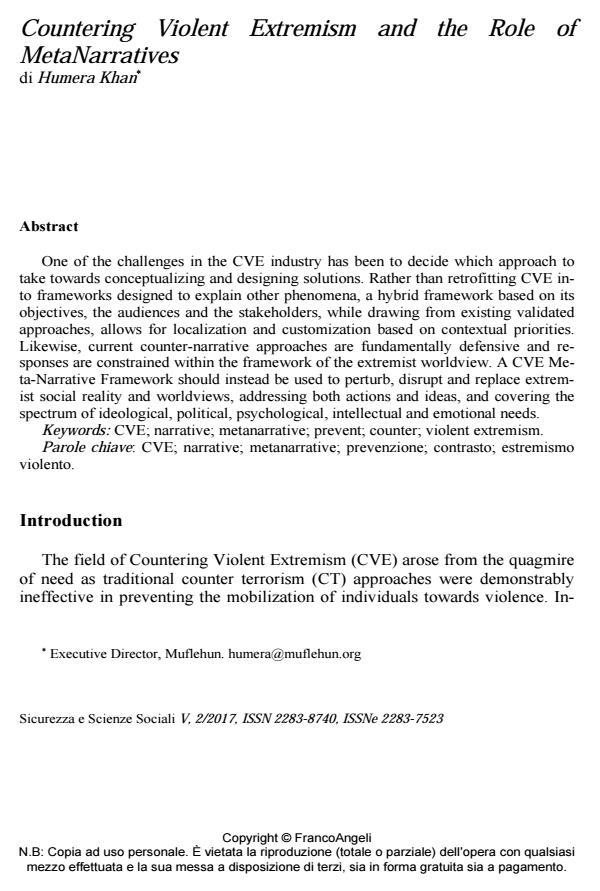Countering Violent Extremism and the Role of MetaNarratives
Journal title SICUREZZA E SCIENZE SOCIALI
Author/s Humera Khan
Publishing Year 2017 Issue 2017/2
Language Italian Pages 20 P. 159-178 File size 205 KB
DOI 10.3280/SISS2017-002010
DOI is like a bar code for intellectual property: to have more infomation
click here
Below, you can see the article first page
If you want to buy this article in PDF format, you can do it, following the instructions to buy download credits

FrancoAngeli is member of Publishers International Linking Association, Inc (PILA), a not-for-profit association which run the CrossRef service enabling links to and from online scholarly content.
One of the challenges in the CVE industry has been to decide which approach to take towards conceptualizing and designing solutions. Rather than retrofitting CVE into frameworks designed to explain other phenomena, a hybrid framework based on its objectives, the audiences and the stakeholders, while drawing from existing validated approaches, allows for localization and customization based on contextual priorities. Likewise, current counter-narrative approaches are fundamentally defensive and responses are constrained within the framework of the extremist worldview. A CVE Meta-Narrative Framework should instead be used to perturb, disrupt and replace extremist social reality and worldviews, addressing both actions and ideas, and covering the spectrum of ideological, political, psychological, intellectual and emotional needs.
Keywords: CVE; narrative; metanarrative; prevent; counter; violent extremism.
Humera Khan, Countering Violent Extremism and the Role of MetaNarratives in "SICUREZZA E SCIENZE SOCIALI" 2/2017, pp 159-178, DOI: 10.3280/SISS2017-002010